I asked an accessibility-friendly yoga teacher for her top five chair yoga stretches to improve your balance and posture—here’s what she recommends
After a bike accident, this yoga instructor discovered just how important mobility aids can be

There’s something special about fitness instructors who understand the needs and challenges of people with limited mobility—yoga teacher Michelle Kelly is one of them.
In 2024, Kelly had a bike accident and broke her pelvis in three places and her collarbone. After taking a break from teaching until she could walk again, she returned with a new focus and launched a chair yoga class called Active & Able.
Kelly was already offering accessible yoga in 2020 during the pandemic after realizing older family members had stopped exercising. When she returned to teaching, she used some of these moves with a renewed appreciation for aids, especially the chair.
“My accident was at the end of May 2024, and I began teaching the chair yoga class mid-July 2024,” says Kelly. “It was the only one I taught for a month. By using the aids I had, I was able to truly get an understanding of what people with mobility issues need.”
“When using a chair, movements can be made easier by eliminating some of our body weight,” she explains. “Standing behind a chair and using it as an aid when balancing is a great way to begin strengthening your ankles.”
A chair can also be used to build up to harder poses if you have limited mobility.
“We can make movements a bit easier, then depend less on the chair as strength and range of motion improve,” she says.
Start your week with achievable workout ideas, health tips and wellbeing advice in your inbox.
“Standing for long periods of time can be difficult for some, so being able to sit and still move your body is a huge plus, especially if someone lacks the confidence to get up and down off the floor.”
If you struggle with your mobility, want to improve your balance and posture or want some variety in your regular practice, try Kelly’s five-move chair-supported sequence below. You’ll need a chair and a yoga block, but a rolled-up towel will also work if you don’t own a block.
1. Twist

Time: 5 breaths each side
- Sit upright in a chair.
- Place both hands on the right side of the backrest.
- Keeping your hips and knees pointing forward, rotate to look toward your hands and over your right shoulder.
- Hold for five long breaths, then repeat on the other side.
2. Figure four
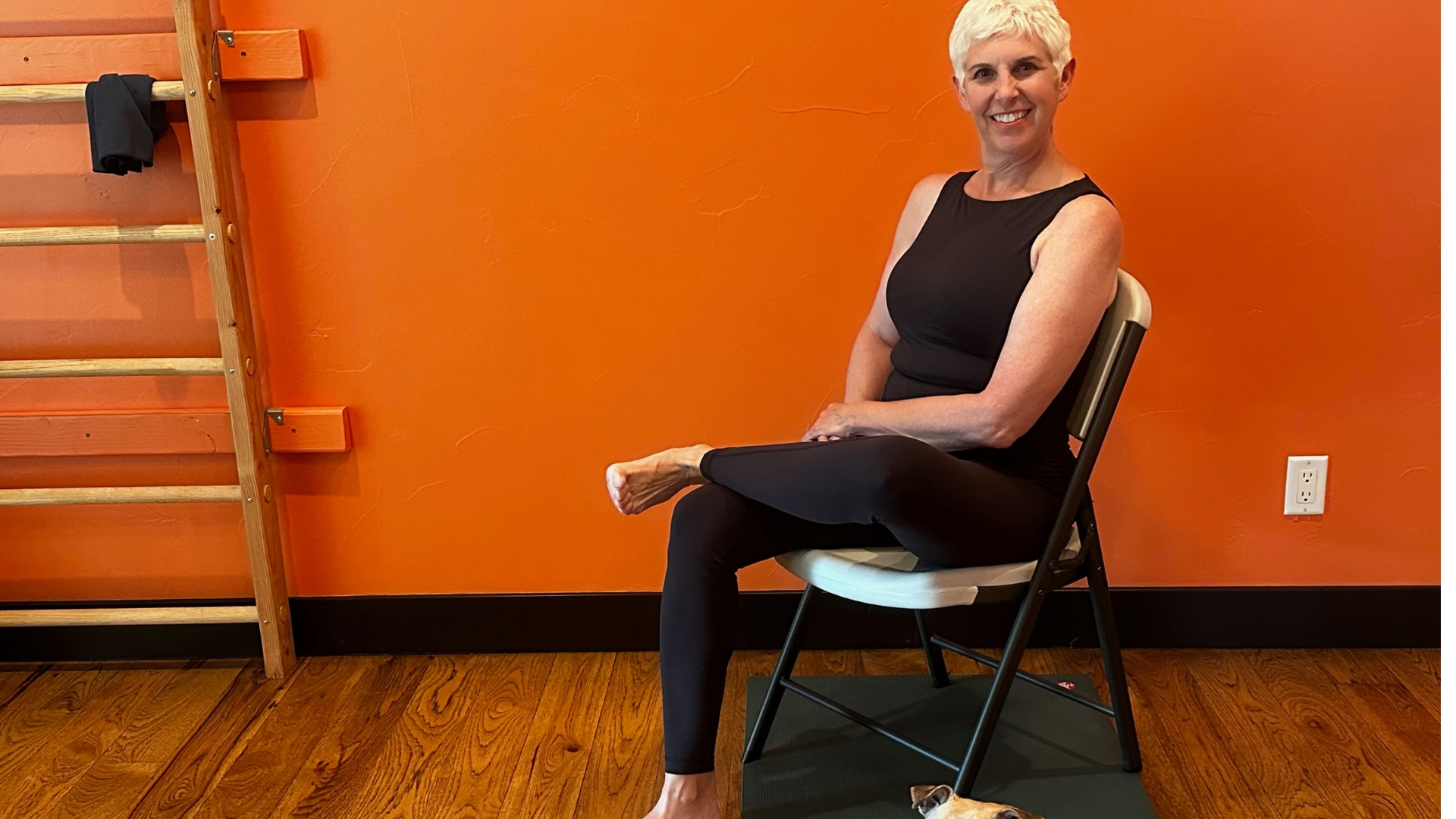
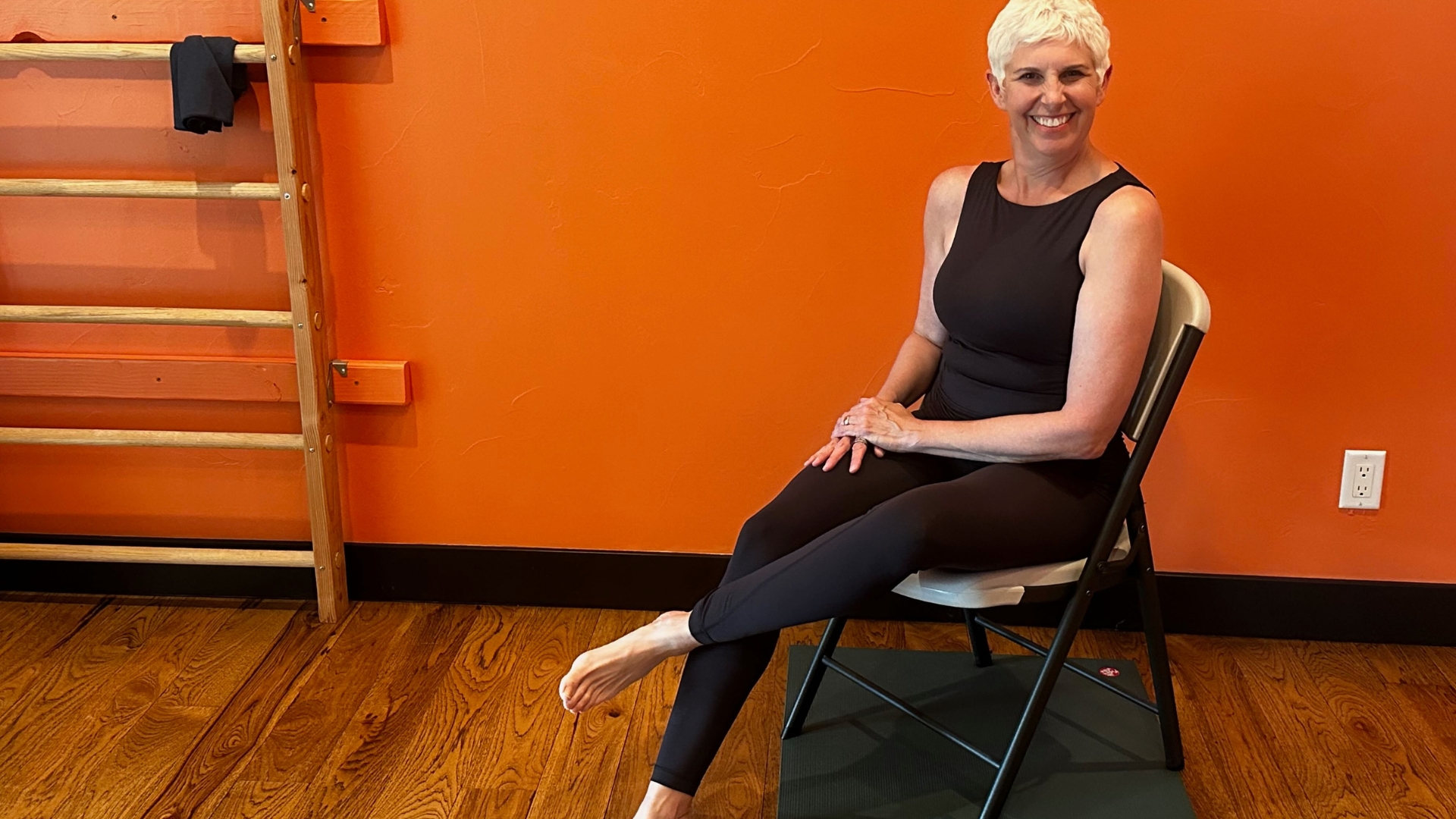
Time: 5 breaths each side
- Sit upright in a chair.
- Cross your left ankle over your right knee, so your ankle sits beyond your thigh, not on it.
- Gently press your left knee down while flexing your left foot—you should feel a stretch in your left buttock.
- Hold for five deep breaths, then switch sides.
Make it easier: If this isn't accessible, release your foot position and try again. If it remains inaccessible, you can also move your right foot forward and rest your left ankle just above your shin and below your knee.
3. Calf stretch
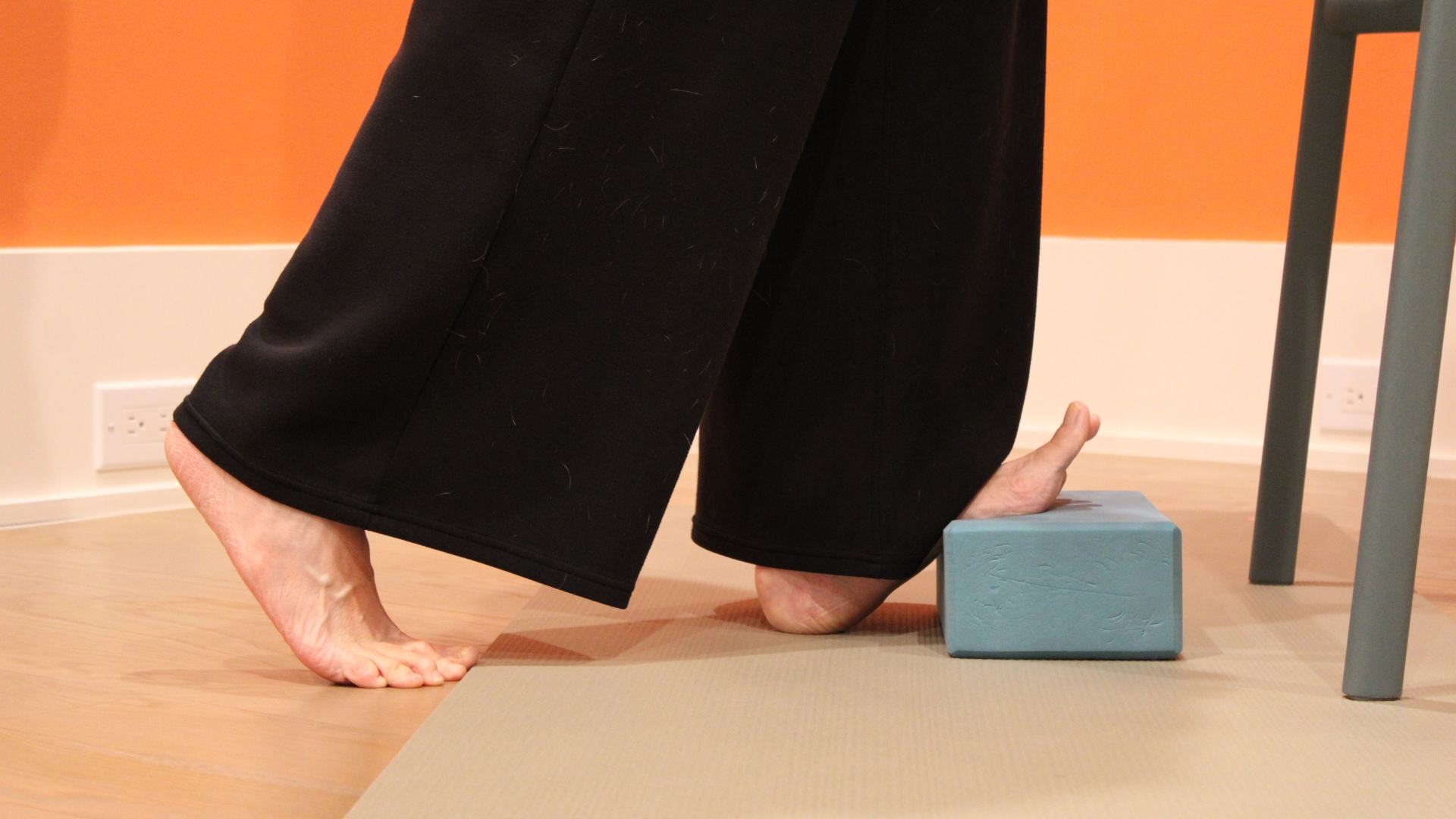
Time: 5 breaths each side
- Stand behind a chair, with your feet hip-width apart, hands resting on the back and a foam block horizontally in front of your feet.
- Place the ball of your right foot on the block and your right heel on the floor.
- Press your foot into the block and hold for five deep breaths. Lift your right toes to deepen the stretch,
- Return to the starting position and repeat on the other side.
4. Balance

Time: 5 breaths each side
“This is not a static pose—your foot and ankle may be moving quite a bit,” says Kelly. “That is what you want as you are building strength through the full range of motion of your ankle and foot.”
- Standing left side-on to the back of a chair and holding on to the backrest of the chair for support with your left hand, stand on a yoga block with your left foot.
- Place your right foot on top of your left, pressing into your toes, with your right heel pointing left and your right knee pointing right.
- Rest your right arm in the curve of your lower back.
- Hold for five deep breaths, then switch sides.
- Aim to build up to a two-minute balance on each foot.
Form tip: If balancing on a yoga block is too hard, practice on the floor. Notice how much you need the chair for support. Can you lighten your touch and still maintain your balance?
5. Block in back
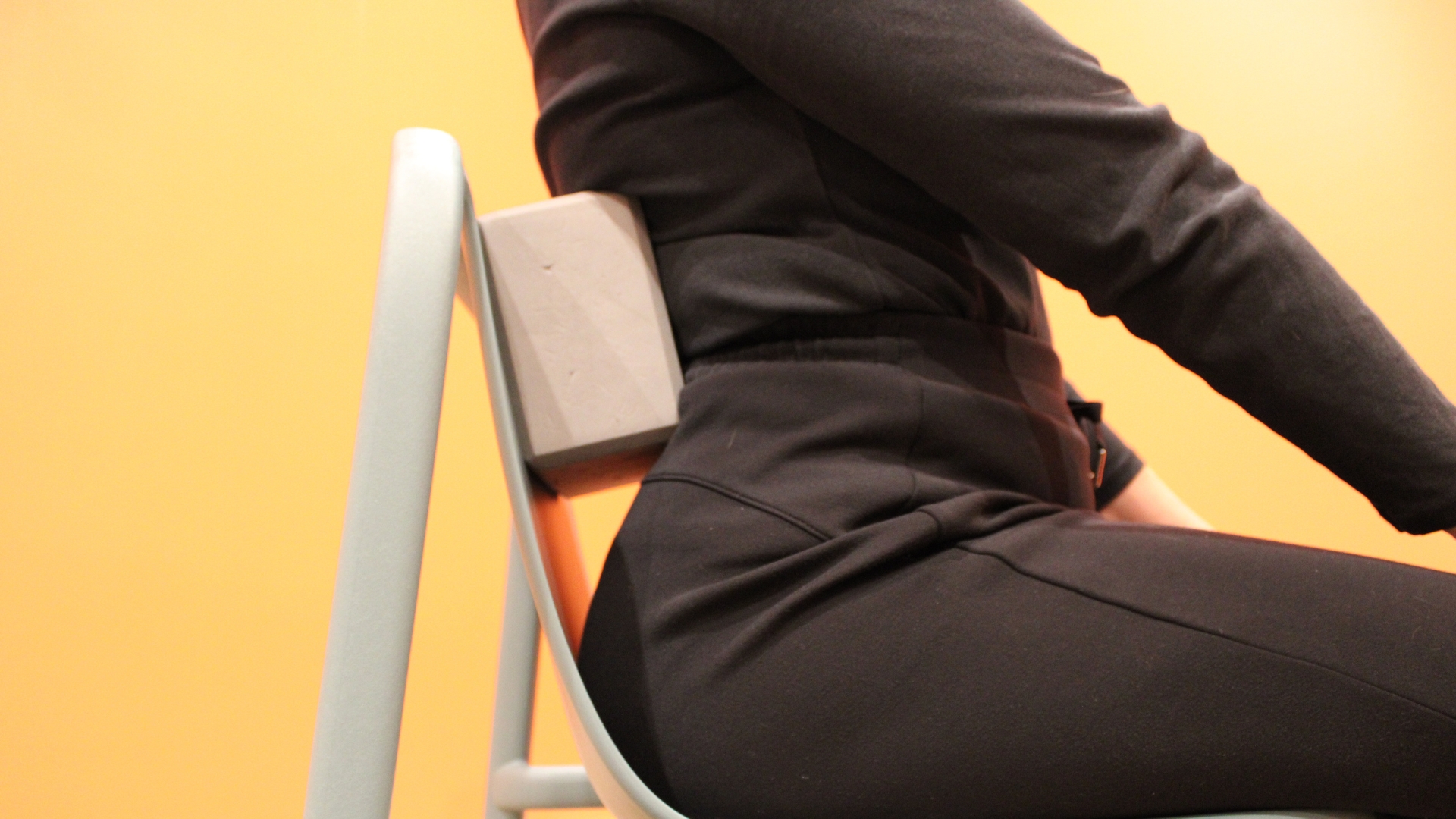
Time: 5 breaths
“So many of us end up tucking our tailbones and rounding our backs all day long, which can cause back and neck pain,” says Kelly. “Try sitting with a pillow or foam block behind your back to begin undoing all that tailbone tucking and back rounding.”
- Sit upright in a chair with a block orientated horizontally placed between your back and the backrest, below your shoulder blades and above your hips, in the curve of your lower back.
- Hold for five deep breaths.
- To deepen the stretch, lengthen your spine and look down toward your knees.
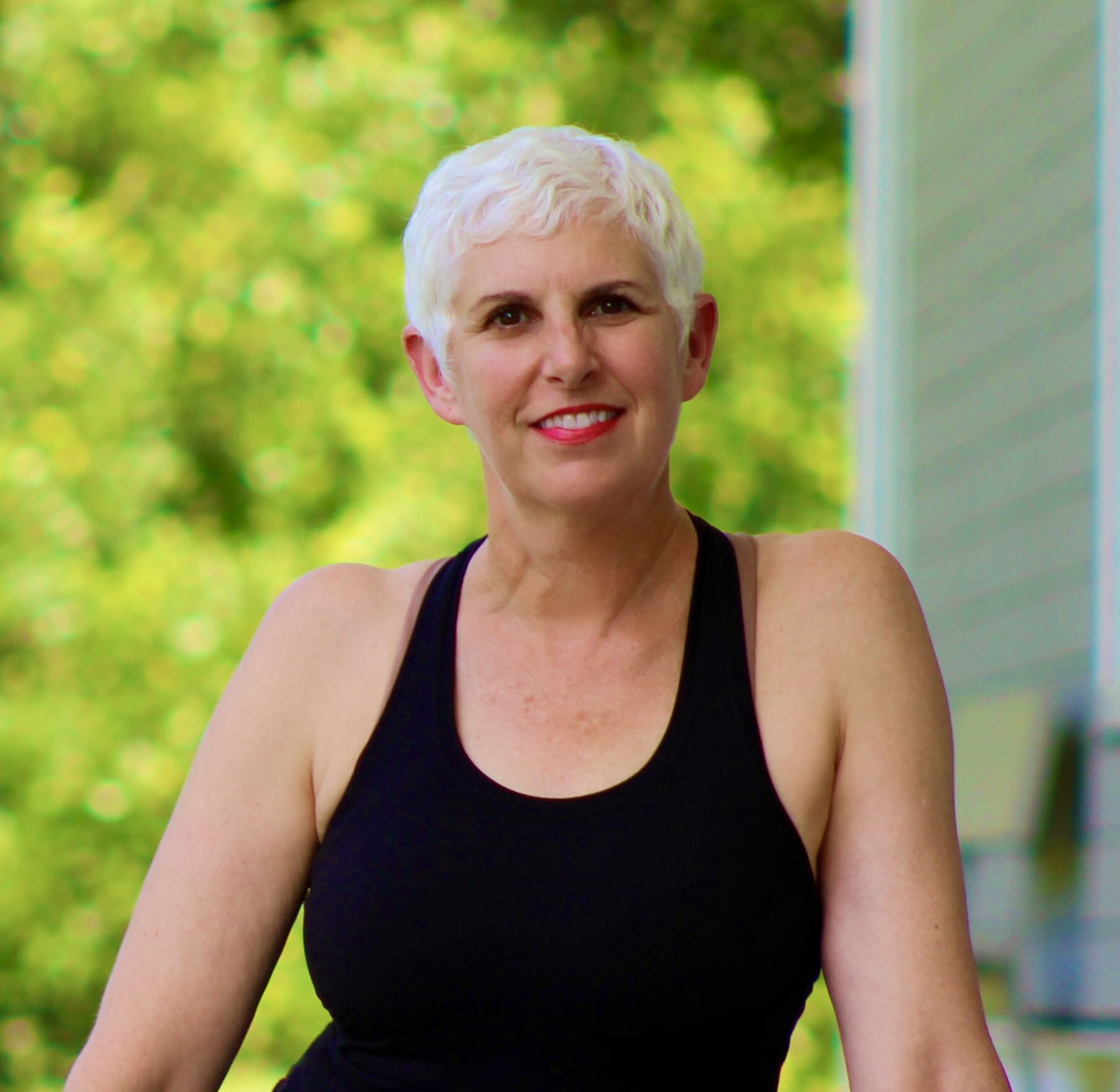
Michelle Kelly is a 200-hour RYT Certified Yoga Instructor who has been teaching since 2017. She is passionate about fostering functional strength, mobility, and recovery through yoga. With an anatomy-focused approach, Kelly guides students to build strength through the full range of motion in every joint, emphasizing sustainable, healthy movement over achieving the “perfect” pose.
She has more than 2,000 hours of teaching experience in person and online and offers specialist classes for those who have reduced mobility. She runs weekly live-stream classes, which can be accessed through her website: Michelle Kelly Yoga.

Lou Mudge is a Health Writer at Future Plc, working across Fit&Well and Coach. She previously worked for Live Science, and regularly writes for Space.com and Pet's Radar. Based in Bath, UK, she has a passion for food, nutrition and health and is eager to demystify diet culture in order to make health and fitness accessible to everybody.
Multiple diagnoses in her early twenties sparked an interest in the gut-brain axis and the impact that diet and exercise can have on both physical and mental health. She was put on the FODMAP elimination diet during this time and learned to adapt recipes to fit these parameters, while retaining core flavors and textures, and now enjoys cooking for gut health.
You must confirm your public display name before commenting
Please logout and then login again, you will then be prompted to enter your display name.
